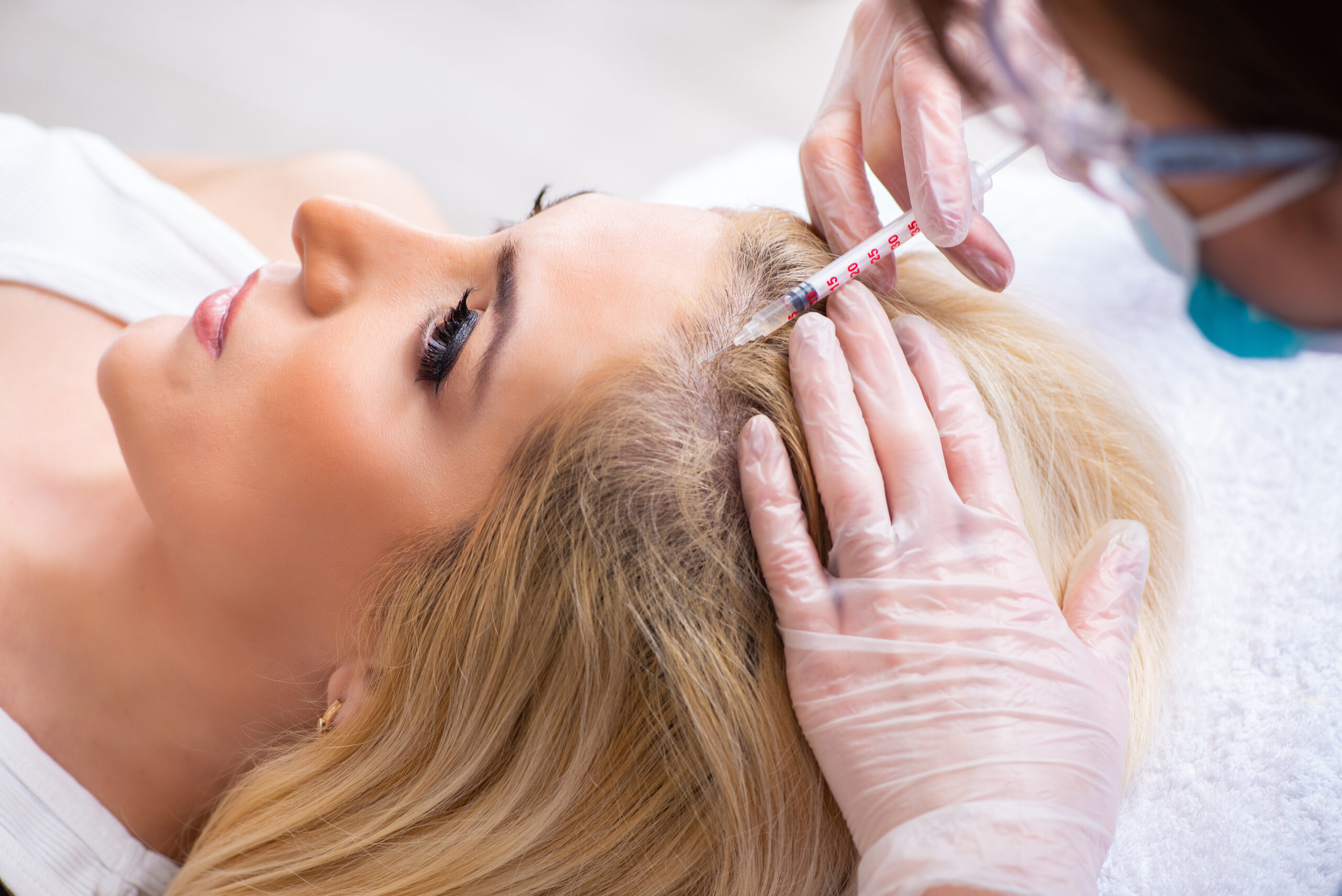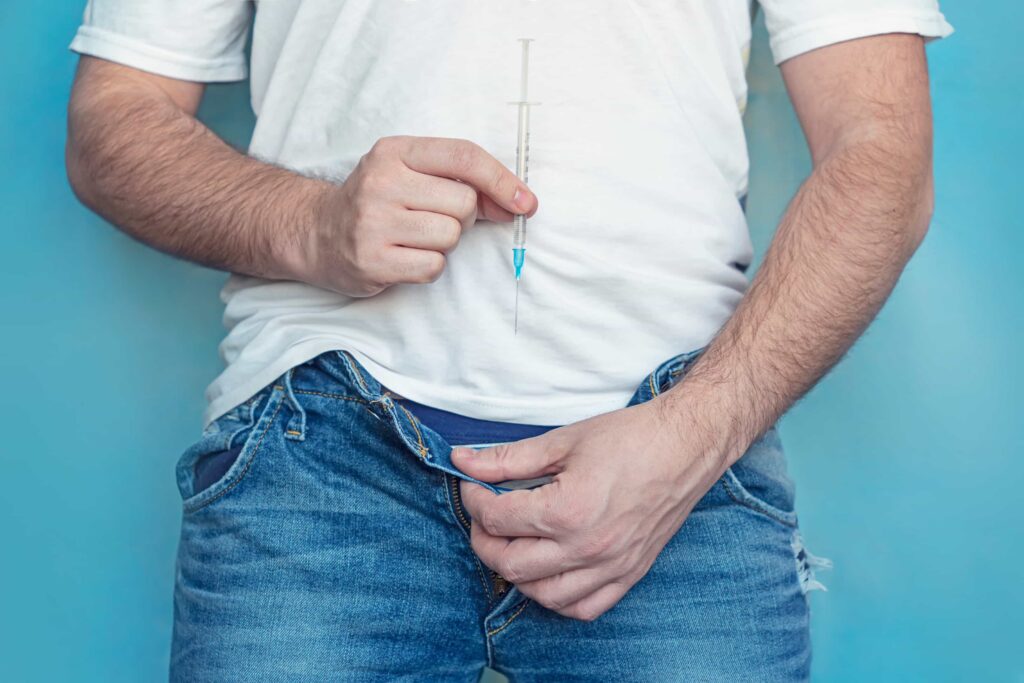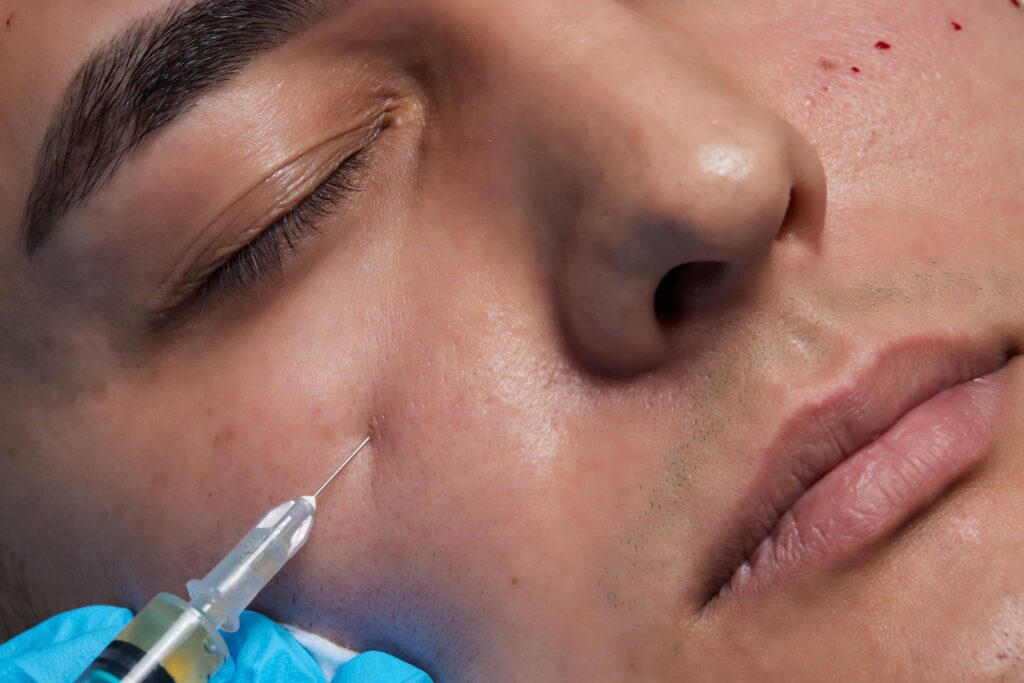PRF (Platelet-Rich Fibrin) and PRP (Platelet-Rich Plasma) are both regenerative treatments that utilize the healing properties of platelets in the blood to stimulate tissue repair and rejuvenation.
While similar, the two treatments differ slightly. PRP involves drawing a small amount of blood from the patient, which is then processed in a centrifuge. The resulting plasma, rich in platelets, is injected into the targeted area. This concentrated platelet solution releases growth factors immediately to promote tissue regeneration, collagen production, and healing.
PRF is more advanced variation of PRP. Like PRP, blood is drawn from patient spun in the centrifuge and PRF is extracted. The resulting fibrin clot features a higher concentration of platelets, white blood cells and stem cells. The PRF is then applied to the treatment area through injections or other techniques and releases growth factors over 7-10 days.
Both PRF and PRP release growth factors that stimulate cell proliferation, collagen synthesis, and tissue repair. PRF contains a higher concentration of platelets and growth factors, which makes it slightly more potent and potentially more effective for tissue regeneration.
They can be used for various purposes, including skin rejuvenation, hair regrowth, wound healing, sexual health rejuvenation, and even in dental and orthopedic procedures.
PRF and PRP are used for their regenerative and rejuvenating properties. Here are some common applications:
The effectiveness of PRF and PRP treatments vary depending on individual factors and the condition being treated. Consult with a qualified medical professional to determine the most appropriate treatment for your needs.
Any new procedure is less daunting when you know what to expect. Learn more below.
As for side effects, they are generally mild and temporary. Common side effects include redness, swelling, bruising, and slight discomfort at the injection sites. These usually subside within a few days.
Before undergoing PRF or PRP treatment, consult with a qualified medical professional who can assess your specific needs and potential risks.
The number of treatments needed for PRF (Platelet-Rich Fibrin) or PRP (Platelet-Rich Plasma) varies depending on the specific aesthetic concern being addressed. In general, multiple sessions are recommended to achieve optimal results.
For collagen rejuvenation, it is typically advised to undergo a series of three to four treatments spaced about four to six weeks apart. This allows for gradual improvement in skin texture, tone, and firmness over time.
In the case of hair loss, the treatment protocol may involve 4-6 sessions at monthly intervals. Results can be noticeable after a few months, with continued improvement over several months.
Studies have demonstrated improvements in skin quality, reduction in wrinkles, and increased hair density. However, individual results may vary depending on factors such as age, overall health, and the severity of the condition being treated.
PRF and PRP are not standalone solutions and may be used in combination with other aesthetic procedures or as part of a comprehensive treatment plan tailored to each individual’s needs. Consult with a qualified medical professional to determine the most suitable treatment approach for your specific concerns.
The longevity of PRF (Platelet-Rich Fibrin) or PRP (Platelet-Rich Plasma) results in the hair or face vary depending on several factors, including individual response, treatment technique, and maintenance. While PRF can stimulate collagen production and promote hair growth, and the results are not permanent.
For facial rejuvenation, PRF or PRP can improve skin texture, tone, and elasticity. The effects typically last several months to a year. To maintain optimal results, follow-up treatments may be recommended every six to 12 months.
For hair loss, PRF or PRP can help stimulate dormant hair follicles and promote hair growth. Patients often notice improvements in hair density and thickness. However, since hair growth is influenced by various factors, including genetics and underlying conditions, individual responses may vary.
Platelet-rich fibrin (PRF) has a high safety profile because it’s derived from a patient’s own blood, which eliminates the risk of allergic reactions or adverse effects.
$600- $1,200 per session. The price varies depending on the area or if microneedling is paired with treatments.





